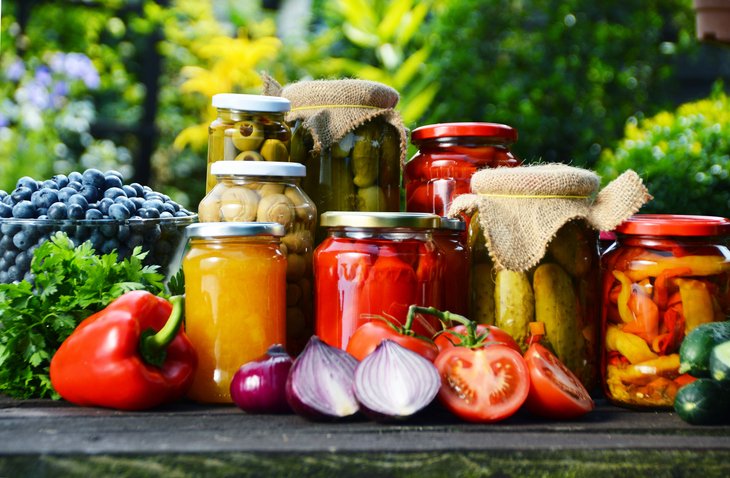
The process of canning as we know it can be traced as far back as the early 1800s and the efforts of Parisian Chef Nicolas Appert. When first beginning to look for ways to preserve his culinary creations, Appert thought that oxygen was what caused spoilage and that food could be preserved by minimizing air flow. He soon discovered that he was partially right. After further investigation, he also realized that heating an item could help preserve it. With this in mind, he began to preserve food by applying heat and putting it into a glass jar, corking it like wine, and then sealing it with wax.
Today, canning is used across the world to keep food safe for consumption for extended periods of time. You can find almost any variety of food in cans, from meat and seafood to vegetables, fruits, jams, and more. If you’re considering enrolling in a food safety program, read on to learn more about why canning is so effective.
Why Canning Works Explained for Students in Food Safety Training
The reason canning works is actually quite simple; it’s all based on the fact that food goes bad when harmful microorganisms contaminate it. To overcome this, canning involves bringing foods to a high temperature, which kills harmful microorganisms. Once the can is sealed, no more harmful microorganisms can get in. Thus, graduates of food safety training can trust that the food won’t go bad when stored at room temperature for long periods of time.
Types of Food Spoilage Effective Canning Can Prevent
Canning stops a number of different types of food spoilage that can make people sick when consumed. It can effectively prevent mold, which typically grows on highly acidic foods. It can also prevent yeast, which is also attracted to highly acidic foods like jam. Canning even helps to prevent enzyme reactions, which are the same reactions that cause food to ripen or apples to brown when sliced.
Many different types of bacteria can also be eliminated with canning. However, graduates with a food safety diploma may know that one of the most dangerous forms of bacteria that can grow when foods are improperly canned is Clostridium botulinum, which causes botulism. The spores of Clostridium botulinum, which grow on low-acidic foods, are hard to kill because they require extremely high temperatures to destroy. Unfortunately, when ingested, Clostridium botulinum can be very harmful and even sometimes fatal. Because of this, following the proper steps when canning low-acidic foods is essential.
The Two Main Methods of Canning Students in Food Safety Training Should Be Aware Of
There are two main methods used to can foods: water bath canning and pressure canning. Each one is used for canning certain types of foods. Water bath canning involves placing cans or jars in a pot of boiling hot water, which raises the temperature of food high enough to kill microorganisms. This method is often used for foods with a high acidity level like jams and pickles.

Water bath canning is used for highly acidic foods like pickles
Pressure canning, on the other hand, is generally used for lower acidity foods with a pH of 4.6 or higher like vegetables, meat, and seafood. To pressure can a food, a pressure cooker brings the food to high temperatures to the tune of 240 degrees Fahrenheit or about 115 degrees Celsius. These high temperatures have to be used in order to ensure that Clostridium botulinum cannot grow.
Do you want to make food safer for people across the world to eat?
Contact AAPS to learn more about starting a food safety worker career!



